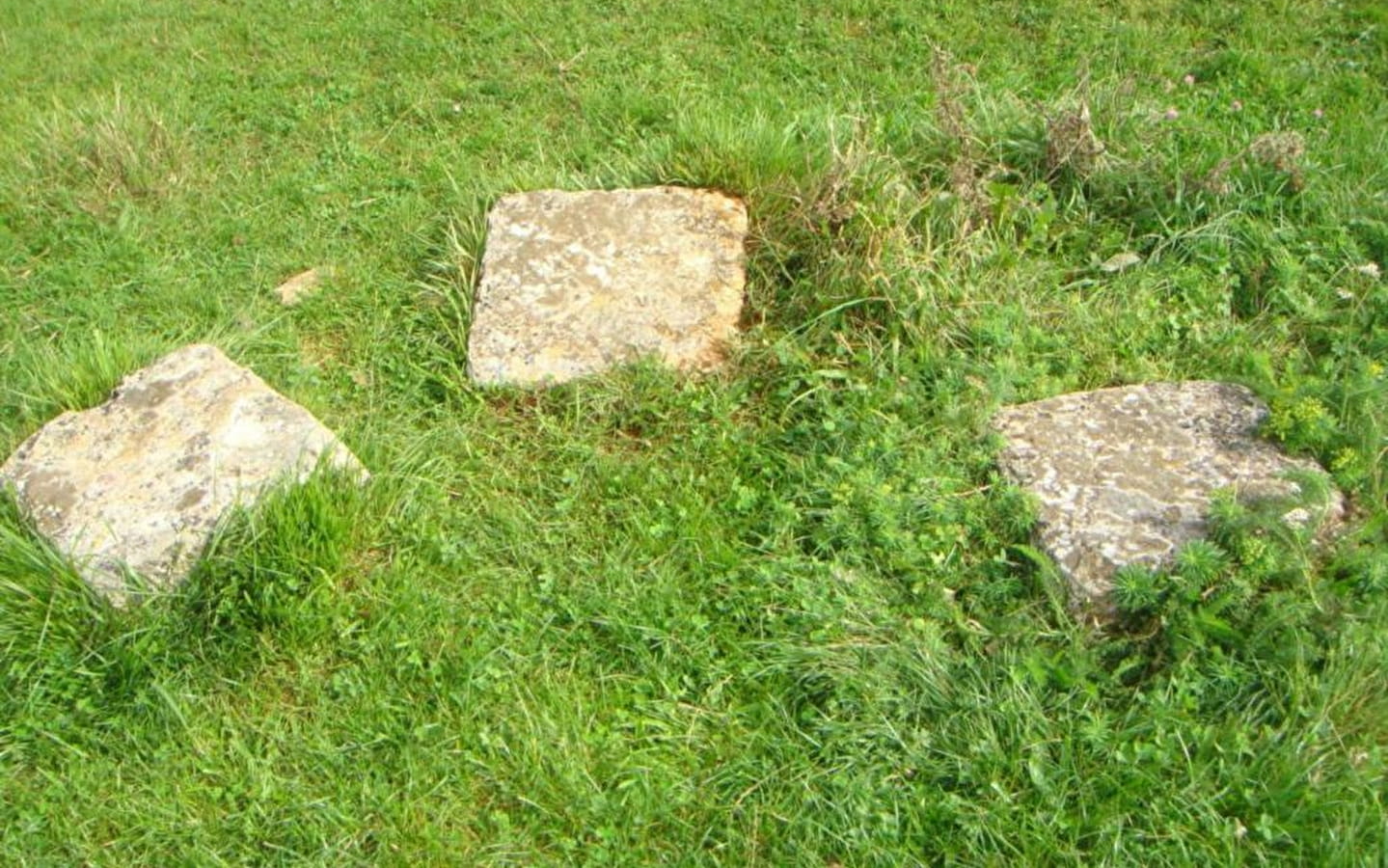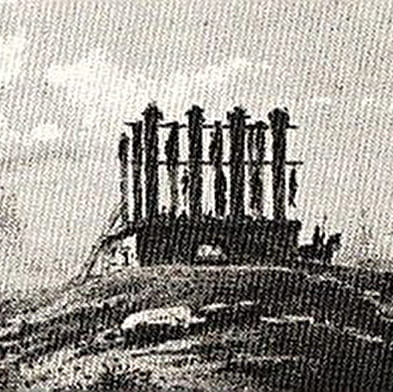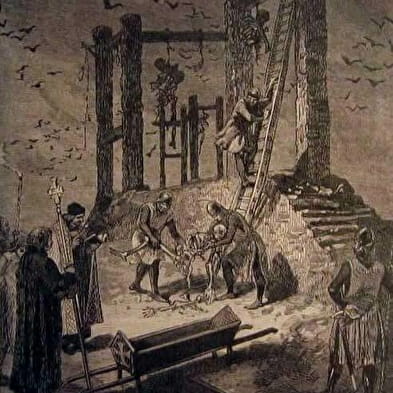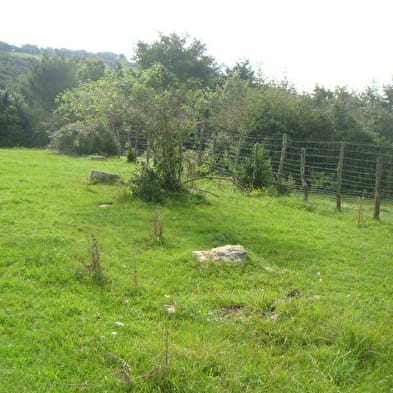
Gibet du Col de plain Champ
A pass above Chevignat, a natural boundary with the Jura, demarcated in 1613 (border between France and the County of Burgundy), in the Middle Ages was the site of a gallows.
Several viewpoints and panoramic views of the typical Revermont plot. Remains of Capettes (dry-stone huts). Access to Mont-Myon, the Roissiat quarry and Dingier.
Boundary marker: The boundary marker is one of a series of boundary markers erected in 16132, marking the new border between the Kingdom of France (following the capture of Bresse, Revermont and Bugey from the States of Savoy by the troops of the King of France) and Burgundy's Franche-Comté. This followed the Treaties of Lyon in 1601 and Auxonne in 1612.
Patibular forks (history)
Patibular forks were gallows made up of two or more stone columns supported by a horizontal wooden crossbeam. Placed high up and in full view of the main public road, they signalled the seat of high justice and the number of stone columns indicated the title of the holder.
Those condemned to death were hanged from the crossbeam and their bodies left on the gallows to be seen by passers-by and devoured by crows (or ravens, according to several songs).
The expression fourches patibulaires is usually written in the plural, although it is sometimes found in the singular.
The origin of the term "fourches patibulaires" dates back to Roman times when, after stripping a condemned man of all his clothes, he was made to pass his head through a fork and his body, attached to the same piece of wood, was beaten with rods until the condemned man died from his suffering.
The pitchforks were generally placed on high ground, outside towns, villages and cities, usually near a main road and in a place where travellers could see them, in order to instil a sense of horror at the crime.
Despite the macabre nature of these structures and the foul smell they gave off, the vicinity of the pitchforks was often lined with taverns, as hangings were a popular spectacle in the Middle Ages.
The number of justice pillars in the pitchforks varied according to the quality of the lords who built them: only the king could have as many as he wanted, dukes had eight, counts six, barons four, squires three and simple gentlemen high justiciars two. All high justiciars were required to have pitchforks to demonstrate their power of justice.
- Pets not allowed
From 01/01/2025 to 31/12/2025









